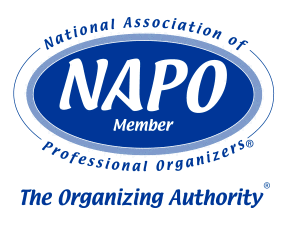 As business owners, we need to constantly be looking forward and figure out what we want our businesses to accomplish in the upcoming weeks, months or years. In addition to constant re-evaluation, most businesses choose one time per year to do long-range planning. Every business has a different time for this process: in January to kick off the new year; at their financial year end; during their annual Board retreats; etc. The best time for this process is whenever it works for you. For me, January is the best time. That’s when I get to thinking about what needs to happen to make 2015 a successful year for me and my business clients.
As business owners, we need to constantly be looking forward and figure out what we want our businesses to accomplish in the upcoming weeks, months or years. In addition to constant re-evaluation, most businesses choose one time per year to do long-range planning. Every business has a different time for this process: in January to kick off the new year; at their financial year end; during their annual Board retreats; etc. The best time for this process is whenever it works for you. For me, January is the best time. That’s when I get to thinking about what needs to happen to make 2015 a successful year for me and my business clients.
Here are the top ten items we will be focusing on:
- Take care of yourself. For a business to thrive, it needs a healthy leader. Taking care of yourself takes many forms, both physical and mental. Whether it’s hitting the gym a few times a week, participating in leadership forums, or forcing yourself to take a much-needed vacation, take care of yourself so you will be there to take care of your employees.
- Realize that sometimes less is more. Focus on doing a few things well versus doing a number of things part way. Having 15 goals may sound like an excellent business strategy, but having five goals that are strategic and attainable will more than likely be a more successful approach.
- Learn how to delegate. No matter how fantastic, one person can’t do everything at an expert level. Many things can be delegated: website development, Quickbooks maintenance, cleaning services, marketing, etc. Identify the things you don’t like to do, or don’t feel you do well, and find someone that does. Those people will generally be better and faster at it than you will.
- Review office functionality. Annually review job descriptions, processes, and communication patterns and make changes to procedures accordingly. Maybe your Office Manager has changed and they no longer make the mail run or input information in Quickbooks. If so, adjust the job description accordingly. If your business has expanded and you now have two outside sales representatives, review their territory allocations and document it. There are many changes that business should make as they expand, contract, or change. Ensure changes are documented and communicated accordingly.
- Go mobile. According to Televox, a global technology provider, 94% of smartphone owners will look up information on their phones, make sure your website is compatible with mobile phones and tablet devices.
- Review compliance with Labor and Industries. Nearly every business that employs at least one person needs to comply with Labor and Industry rules and regulations. If you haven’t already, commit to going to a Labor and Industries seminar and educate yourself on requirements for compliance. Do you have an Accident Prevention Program? Do you have a Hazardous Chemical Program? Do you hold and document monthly safety meetings? Figure out what you need to do to be compliant before Labor and Industries pays you a visit.
- Refresh your website. Customers look to your website to get a feel for what you do, how you do it, and how professional your organization is. Check your contact information for accuracy. If you have any links from your website, make sure they work. Update photos where applicable. Most importantly, have someone you know and trust use your website. Sometimes we are too close to our own business to ascertain whether the website works for the general public.
- Get ready early for tax time. Whether we owe money or are getting money back, there’s a great sigh of relief when we’ve finished our taxes. Check with your accountant as soon as possible to ensure you have what they need to complete your taxes in a timely manner. Ask your accountant about record retention so you can set up filing systems and purge paperwork as you are pulling together paperwork for this year’s filing. Also, review your current business model with your accountant to ensure your business is categorized correctly, possibly an LLC may protect you on a personal level.
- Find a new way to engage with your customers. If appropriate for your business, consider developing a Facebook page, Twitter account, or newsletter program. Communicating with your customers the way THEY want to be communicated with will be the most valuable use of marketing dollars and time. If possible, find an expert to help you through this process.
- Network your heart out! No matter what your business is, we all know someone who knows someone that could use our services. Be the first person that comes to mind when someone says “do you know anyone that . . . . .”
A theme running through these resolutions is personal engagement. Engage with your employees, customers, and most importantly, yourself. Figure out what has been working, what needs to be done, and who should do it.
Although these goals will take effort and may require a bit of a change in habit and mindset; when they are put into practice, your business will be more successful and you will be a more successful, and happier, leader.
Cindy Jobs


